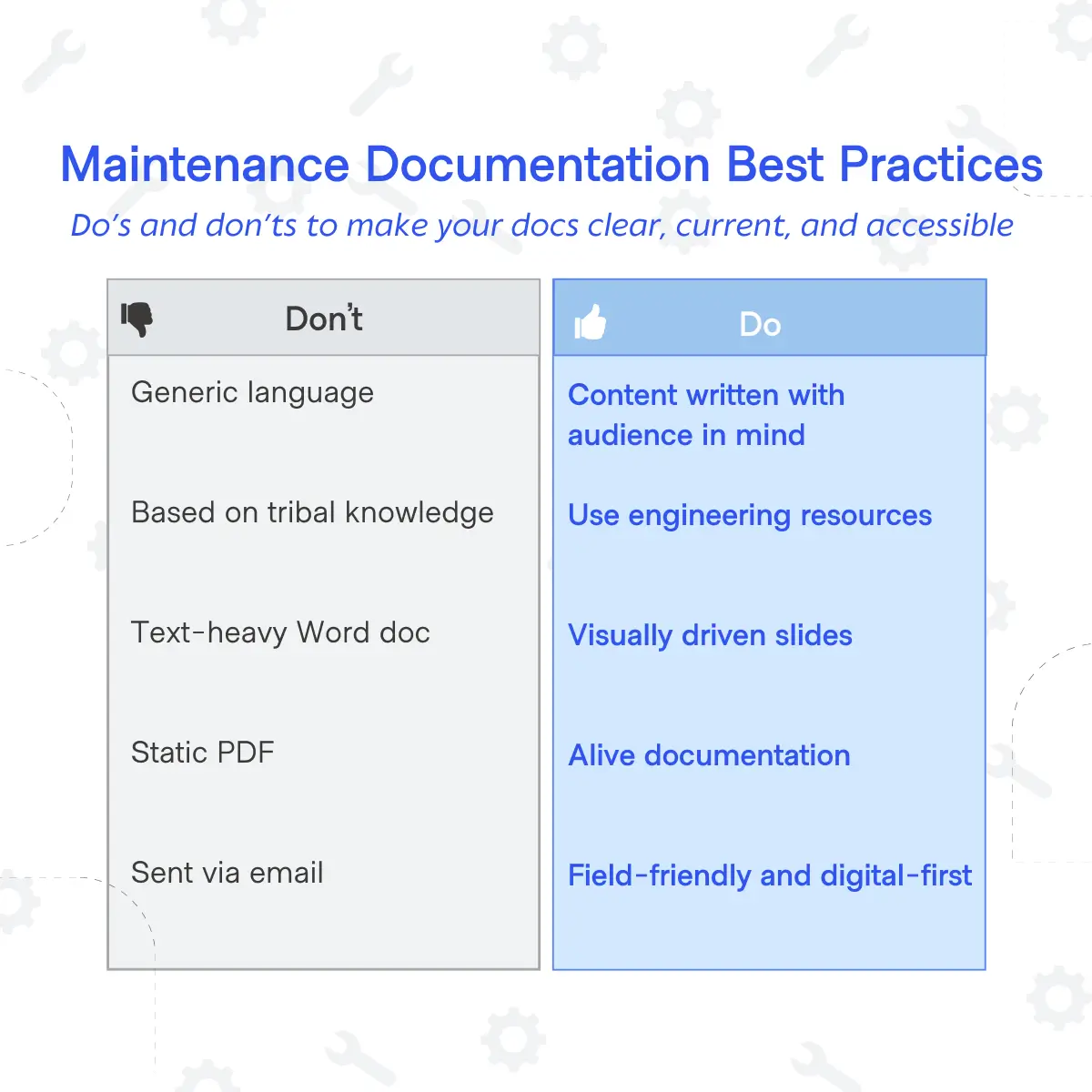If you’re reading this, you don’t need another explanation of tribal knowledge. You’ve lived it.
The technician who calibrates the machine by “feel.” The engineer who remembers the one bolt that always strips. The workaround that’s passed down verbally but never written anywhere. This kind of knowledge is everywhere, and it's fragile.
We polled mechanical engineers, technicians, manufacturing engineers, supply chain managers and more about how tribal knowledge has affected their workflow. Not surprisingly, they had plenty to say.
.png)
Everyone in manufacturing wants to capture tribal knowledge. But the real question is: where should it live? Most teams overlook the obvious answer: documentation.
Not the clunky PDFs or outdated binders you're thinking of. We’re talking about living, searchable, up-to-date documentation that actually works the way your team does. The kind that doesn't force you to file a report to capture it, but works alongside you everyday.
In this post, we show you that documentation is the most overlooked tool in solving the tribal knowledge problem and how you can start making it your competitive advantage.
The Cost of Uncaptured Knowledge (aka - why should you care!)
Do you have a colleague who is dying to retire, but you’re begging them to stay on to help sustain an old product line? Or even an intern from last summer who assembled all of the robots, but didn’t write any assembly instructions?
When critical know-how lives only in people’s heads, the impact ripples across engineering, manufacturing, and operations. Below are the most common issues that we’ve heard from teams:
- Work gets redone—again and again. Without a record of past solutions, engineers and technicians waste hours solving the same problems multiple times.
- Progress stalls while waiting for the “right” person. Production pauses so someone can track down the one technician who knows the right workaround for a stubborn assembly step.
- Innovations vanish between product lines. A brilliant improvement on Product A never makes it to Product B because it was only shared in a hallway conversation or an email thread that nobody archived.
- Decision context is lost. Months later, nobody remembers why a certain part was designed a certain way—or which trade-offs were discussed.
- Onboarding is slower and more error-prone. New hires have to learn by trial and error, leaning heavily on shadowing and guesswork, which means inconsistent results and wasted engineering time.
Tribal knowledge isn’t just a retention risk– it’s an operational tax you pay every single day! And it’s worth fixing.
Incorporating Tribal Knowledge Into Work Instructions
One of the biggest hiding spots for tribal knowledge is in work instructions. These details live in people’s heads, not in the documents. Each build shouldn't feel like a relief; it should feel reliable. With the tools that you already use today, you can implement best practices to pull that knowledge out and get it into your work instructions flow.
- Turn repeated questions into steps or notes - if someone asks the same “how do I…” question twice, that answer belongs in the work instructions as a note, callout, or extra image.
- Over index on visuals - a well-placed visual often conveys tribal knowledge faster than a paragraph.
- Tag content to the subject matter expert (SME) - so people know who to ask
- Links are powerful - use them in documents to reference other docs
Mine Tribal Knowledge Without The Added Work
What if it were easier to collect the information you know, just by following your usual day-to-day tasks? That’s what we’re building at Quarter20.
While the tips above are a great start, the most effective way to start is deceptively simple: let technology do the heavy lifting. In 2025, your documentation tool should be smart. One with automated tags, cross-document search, seamless version control, and execution traceability.
Quarter20 is the first CAD-connected documentation tool meant to capture your tribal knowledge in the background of your work. Your team already knows so much. They’ve learned it the hard way, through trial, error, and iteration. Don’t let that wisdom stay trapped in people’s heads.
Reach out to us at hello@buildquarter20.com to learn more.

.png)
.jpg)


